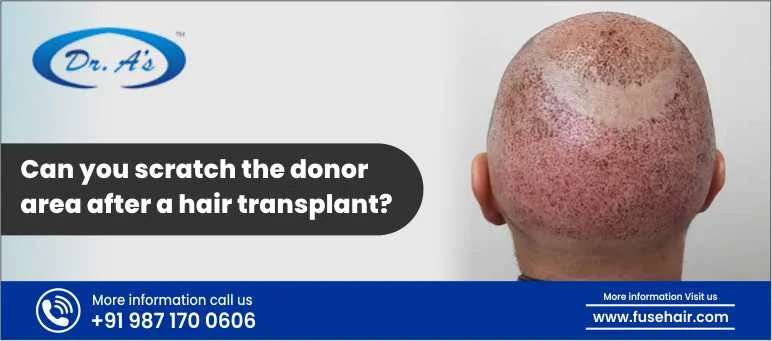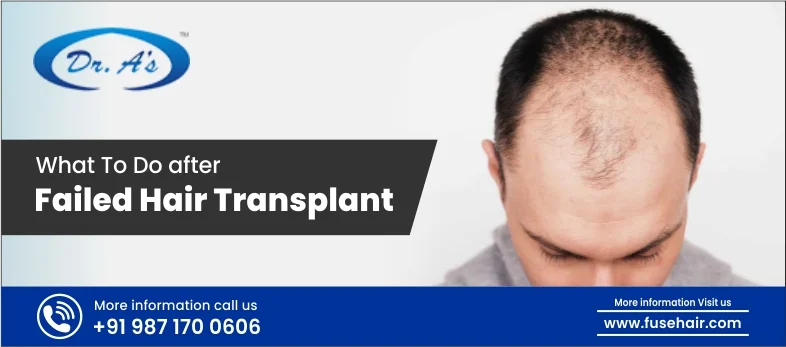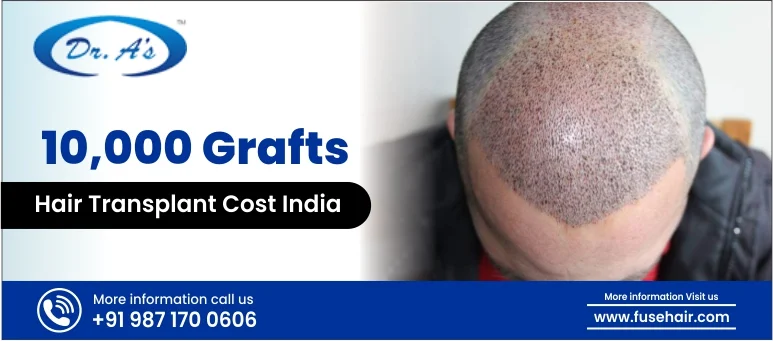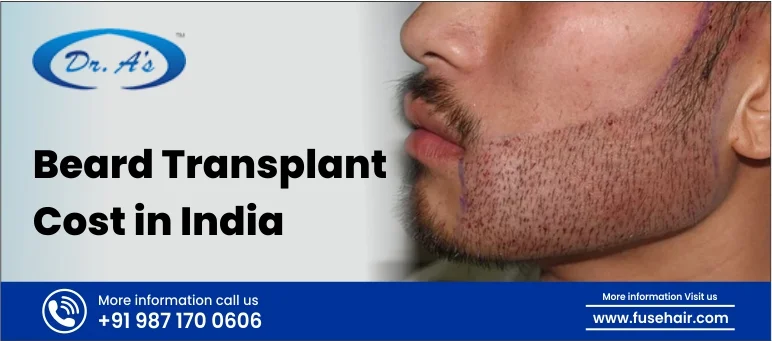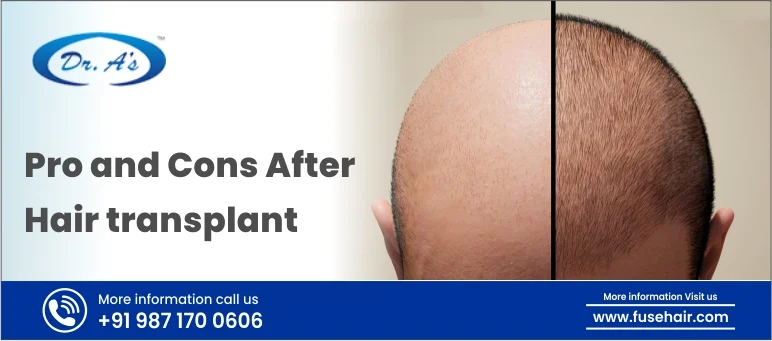
A hair transplant is often a game-changer for individuals struggling with hair loss, offering a renewed sense of self-esteem and a more youthful appearance. However, not every hair transplant achieves the desired outcome, and recognizing a failed hair transplant early is essential for addressing the issues effectively and seeking corrective actions. If you find yourself questioning whether your hair transplant has been successful, it is crucial to consult with a professional.
Dr. A’s Clinic, renowned for offering the best hair transplant in India, provides thorough evaluations to help determine the success of your procedure. This guide will help you identify the signs of a failed hair transplant and suggest steps you can take if the results fall short of expectations.
Reasons Your Hair Transplant May Fail
Identifying why a hair transplant may fail involves understanding various underlying issues. Here are some common reasons for a failed hair transplant:
-
Poor Surgical Technique
A primary cause of a failed hair transplant is poor surgical technique. This can include incorrect graft placement, inadequate handling of hair follicles, or insufficient preparation of both the donor and recipient areas. To avoid these problems, it’s essential to choose a highly skilled surgeon with a strong track record in hair transplants. A successful procedure should result in natural-looking hair growth and minimal complications.
-
Inadequate Post-Operative Care
Effective post-operative care is crucial for the success of a hair transplant. Failure to follow aftercare instructions can lead to complications such as infections or suboptimal graft survival. Adhering to the prescribed care routine is vital, including proper cleaning, avoiding strenuous activities, and using recommended medications or topical treatments to ensure the best outcome.
-
Insufficient Donor Hair Quality
The success of a hair transplant heavily relies on the quality and density of the donor’s hair. If the donor’s hair is weak or sparse, the results may not meet expectations. It’s important to have a thorough assessment with your surgeon to evaluate the viability of your donor’s hair before proceeding with the transplant.
-
Poor Patient Suitability
Not every individual is an ideal candidate for a hair transplant. Factors such as the extent of hair loss, scalp condition, and overall health play significant roles in determining the success of the procedure. If you were not a suitable candidate, you might experience less-than-satisfactory results.
-
Unforeseen Complications
Unforeseen complications can occasionally arise and impact the success of a hair transplant. These complications might include allergic reactions, adverse effects from medications, or unexpected medical conditions. Proper evaluation and monitoring are essential to manage these risks effectively and minimize their impact on the success of the transplant.
Ways To Identify a Failed Hair Transplant
To identify a failed hair transplant, you need to look for specific signs and symptoms that indicate the procedure did not achieve the desired results. Here’s how to recognize a failed hair transplant:
-
Lack of New Hair Growth
One of the most apparent signs of a failed hair transplant is the absence of new hair growth in the transplanted areas. While some shedding of transplanted hair is normal in the initial weeks, noticeable new hair growth should begin within a few months. If there is no improvement or growth in the transplanted area after 6-12 months, it may suggest a failure.
-
Uneven or Patchy Growth
Uneven or patchy hair growth in the transplanted area can be a sign of a failed hair transplant. Ideally, the transplanted hair should grow uniformly and blend seamlessly with the surrounding natural hair. Patchy or irregular growth may indicate that the grafts did not take correctly or were not placed appropriately.
-
Persistent Redness or Swelling
While some redness and swelling are normal immediately following a hair transplant, persistent or worsening redness and swelling could indicate complications. These symptoms might suggest infection, poor graft survival, or an inflammatory reaction, all of which can affect the success of the transplant.
-
Visible Scarring or Graft Irregularities
Visible scarring or irregularities in the grafts can signal a failed hair transplant. In a successful procedure, the donor and recipient areas should heal with minimal visible scarring. If you notice noticeable scars or if the grafts appear irregular or unnatural, it may indicate that the procedure did not go as planned.
-
Increased Hair Loss
An increase in hair loss in the transplanted area, beyond what is typically considered normal shedding, can be a red flag. While some shedding of transplanted hair is expected, if hair loss continues or worsens beyond the initial post-operative phase, it could indicate that the transplant has not been successful.
-
Persistent Pain or Discomfort
Persistent pain or discomfort in the transplanted areas that does not diminish over time may be indicative of complications. While some discomfort is normal, ongoing or severe pain may suggest issues with graft placement, infection, or other problems that could compromise the success of the transplant.
What Can You Do Next?
If you suspect that your hair transplant has failed, it’s important to take the appropriate steps to address the situation and explore corrective options:
-
Consult with a Specialist
The first step is to consult with a specialist who can assess the condition of your hair and determine the cause of the failure. Dr. A’s Clinic, known for providing the best hair transplant in India, offers expert evaluations to diagnose and address issues related to failed hair transplants. An experienced specialist can provide you with a thorough analysis and recommend the best course of action.
-
Consider a Follow-Up Procedure
In some instances, a follow-up procedure or revision surgery may be necessary to correct a failed hair transplant. This could involve additional grafts or adjustments to improve the results. Discussing your options with your specialist is essential to determine if a corrective procedure is appropriate for your situation.
-
Explore Alternative Treatments
If a follow-up procedure is not feasible or desired, alternative treatments such as topical solutions, medications, or non-surgical options like PRP (Platelet-Rich Plasma) therapy may be recommended. These treatments can help stimulate hair growth and address issues related to hair loss.
-
Evaluate the Original Clinic
If your hair transplant has failed, assessing the original clinic and surgeon is essential to understanding any potential shortcomings or areas for improvement. It’s vital to select a clinic with a strong reputation and a proven track record of successful procedures to achieve the best results. Dr. A’s Clinic is a distinguished example of such a facility.
Led by Dr. Arvind Poswal, a pioneer in the field of hair transplantation, the clinic has earned a reputation for excellence and reliability. Dr. Poswal’s extensive experience and innovative techniques have made him a leading authority in hair restoration. Additionally, Dr. A’s Clinic offers competitive hair transplant cost in Delhi, ensuring that high-quality care is accessible without compromising on results. Evaluating your previous clinic with the insights provided by experts at Dr. A’s Clinic can help guide you toward effective corrective solutions and better future outcomes.
Conclusion
Identifying a failed hair transplant early is critical for addressing issues and exploring corrective measures. By recognizing signs such as lack of new hair growth, uneven growth, and persistent symptoms, you can take necessary actions to resolve the situation. For expert guidance, Dr. A’s Clinic, known for offering the best hair transplant in India, provides top-quality care and solutions for failed hair transplants. Taking prompt action can help you restore your hair’s health and regain your confidence.









































































